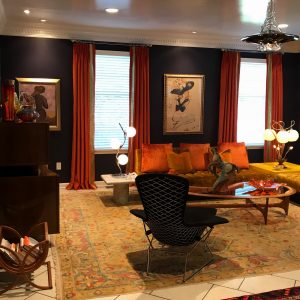When it starts to get cold out, many companies look to dress their office windows with shades and draperies to fight the freezing temperatures. It’s not as simple as hanging up the first thing you find in the store. Do this wrong, and trust me you’ll want to jump out of the window you just dolled up.
Avoid committing the following window dressing faux pas.

Gray is the Color of Dead People
Gray curtains are ugly.
The color gray, or other drab colors like off white and beige, are a real energy drainer. Nobody likes being at work and if they’re looking out the window, you can be sure their mind is fading.
Energize your workers by gussying up those windows with a bold, vibrant shade.
Energy Suckers
Many companies are paying higher energy bills because their leaky windows aren’t properly covered.
Aside from being a great decorating piece, window treatments are an easy way to cut down on heating and cooling costs.
Consider blackout shades, which in some instances have been known to save people up to 25% on their energy bills. The thick blackout material will reject the sun’s heat so your cooling bills will be lower. Sunscreen shades will do the same while letting in the view.
Blackout shades are made of thick material that shields the office from light. Consider these for your conference rooms so that when you give a presentation you can be sure that your audience won’t be squinting to see the screen.
Risking Your Life
It amazes me how many drapery rods out there are hung incorrectly. I’ve seen screws installed directly into sheetrock, which will eventually, absolutely fall out, leading to injury, damage, and insurance claims. A professional installer knows every type of wall and ceiling and has the knowledge and experience to know what type of fastener will hold…forever.
 Short Pants
Short Pants
You can have the most beautiful draperies in the world, but if they’re hung the wrong way it cheapens the whole office.
Draperies that are too short are like pants that are too short. They’re painful to look at. The problem is that many companies feel that they need to chop the draperies short to present a clean, corporate look when in reality it robs the draperies of their aesthetic.
If you want a neat, tailored look, then have them cut off about a half inch above or even touch the floor. Don’t go any shorter or you ruin the effect.
For a more dramatic look, you could let them touch the ground and “puddle up.” This works well for expensive fabrics like velvet because it shows off the light catching quality of the material.
What?? – I Can’t Hear You!
Let’s be real. In New York City offices, especially in shared office spaces with many companies in one small area, there’s always noise issues.
Put those annoying sounds to rest with soundproofing shades that provide a higher level of quiet than most traditional curtains. It may be an additional investment, but you’ll gain it back in employee morale and productivity.
Move It Or Lose It
If you’re lucky enough to have a lot of windows, you have to wonder…will they actually be opened and closed when they should be? Not if they are manual. You will attempt to open and close them for the first couple of days, then you’ll get tired and forget them. The only window treatments that actually get opened and closed are motorized ones.
Walls Closing In On You, Literally
Some people will position the drapery rod lower to correct the fact that they bought a drapery that’s too short. While this is certainly a good way to solve the fabric problem, the result is that it makes the office look smaller because the ceilings appear lower. Also, the drapery rod should be mounted well off the window on the left and right. Otherwise the window will be blocked even when the drapery is open.
By extending the rod at least 6 to 12 inches on each side, you make the windows appear much larger and when you open the draperies, the entire window will be exposed. Work is stressful enough without the feeling that the walls are closing in on you. Literally.
Spare your employees and hang the rod as wide, and as close to the ceiling as possible.
 Who Wants Another Disease?
Who Wants Another Disease?
The last thing you want to be concerned with is someone getting sick at work because your window treatments are full of soot, dust particles, and germs because you neglected to clean them.
According to Chuck Strausser, drapery cleaning expert, “On average, I would say most people wait 5-10 years before cleaning their window treatments. I suggest cleaning every 1-3 years.”
Readers with any questions about how not to mess up their windows this winter should email info@roseintech.com.
